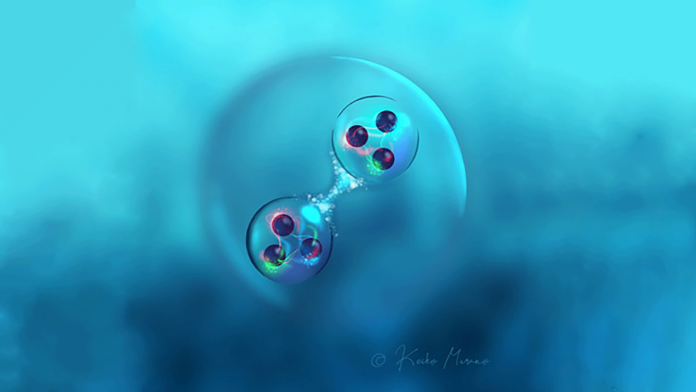Scientists have long wondered if the systems containing two baryons called dibaryons exist. Only one dibaryon called a deuteron had been found to exist in nature. This deuteron consists of a hydrogen nucleus made up of a proton and a neutron- lightly bound to each other.
In nuclear-physics experiments, scientists have caught glimpses of other dibaryons. But, they had a very short-lived existence.
Scientists suggest that many more dibaryons may exist. It’s important to study which pairs of baryons form dibaryons and which do not because this provides valuable insights into how quarks form matter.
RIKEN scientists recently predicted the existence of an exotic particle made up of six elementary particles known as quarks. The discovery offers a detailed understanding of how quarks combine to form the nuclei of atoms.
By calculating the force acting between two baryons, each containing three charm quarks (one of the six types of quarks), scientists predicted the existence of a dibaryon they called the charm di-Omega.
Scientists solved quantum chromodynamics using large-scale numerical calculations. They used two powerful supercomputers: the K computer and the HOKUSAI supercomputer, for the calculations as they involved several variables.
Takuya Sugiura of the RIKEN Interdisciplinary Theoretical and Mathematical Sciences Program said, “We were extremely fortunate to have had access to the supercomputers, which dramatically reduced the cost and time to perform the calculations. But it still took us several years to predict the existence of the charm di-Omega.”
“Despite the complexity of the calculations, the charm di-Omega is the simplest system for studying interactions between baryons. Sugiura and his team are now studying other charmed hadrons using the supercomputer Fugaku, which is the K computer’s more powerful successor.”
“We’re especially interested in interactions between other particles containing charmed quarks. We hope to shed light on the mystery of how quarks combine to form particles and what kind of particles can exist.”
Journal Reference:
- Lyu, Y., Tong, H., Sugiura, T., Aoki, S., Doi, T., Hatsuda, T., Meng, J. & Miyamoto, T. Dibaryon with highest charm number near unitarity from lattice QCD. Physical Review Letters 127 072003 (2021). DOI: 10.1103/PhysRevLett.127.072003
